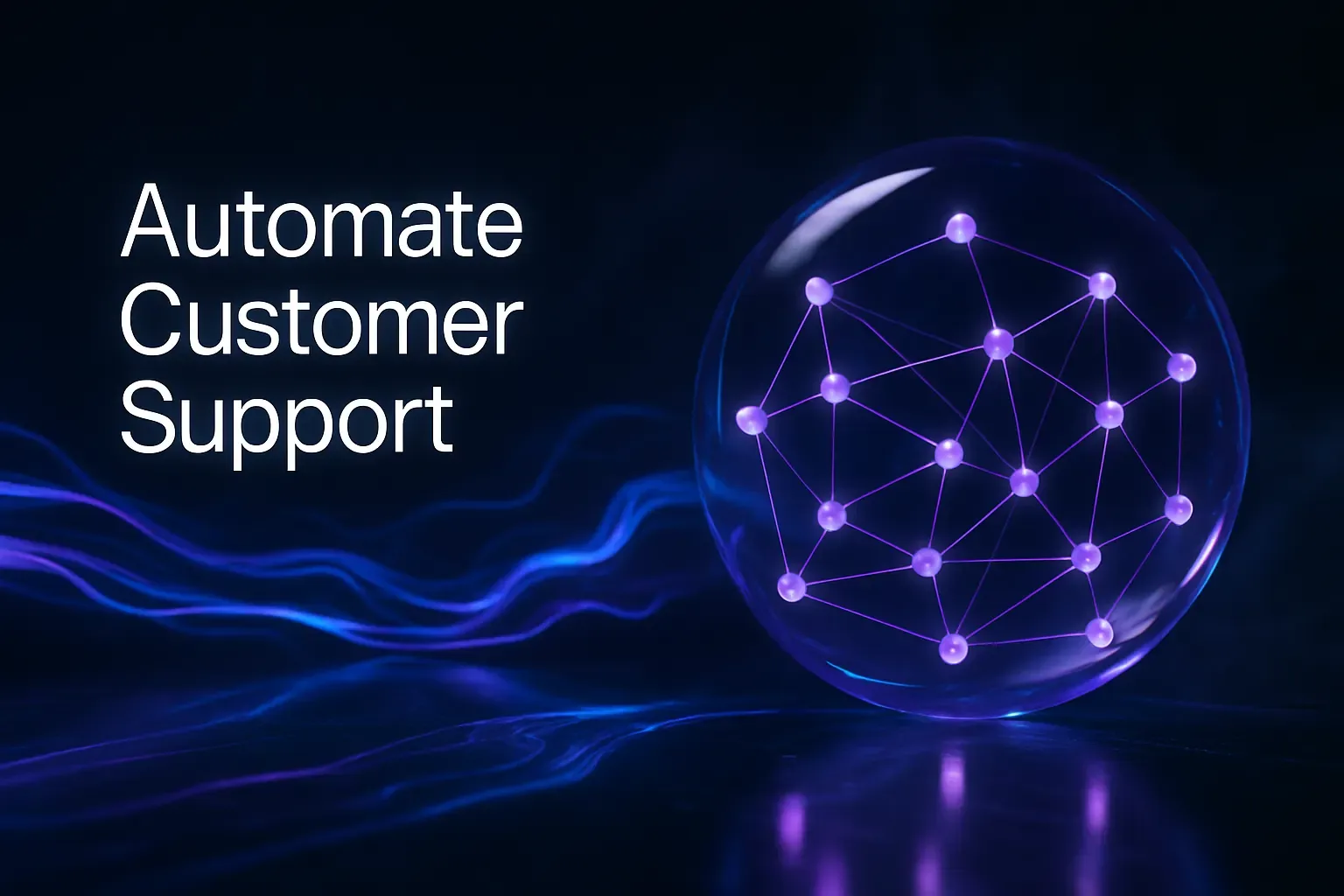Prompts That Shorten Queues, Not Patience
Effective prompts transform standard support scripts into responses that are clear, considerate, and human. They create smart boundaries, carry the right context, and maintain a consistent tone throughout every interaction. This means your team can communicate faster, and your customers truly feel acknowledged.
Use the adaptable templates below to guide AI-generated replies within your CRM, email system, or chat platform. Each prompt reflects a real-world support scenario. Customize with your organization’s policies and relevant links, then implement immediately.
Typewise, an AI writing tool, provides assistance inside your existing tools. It ensures consistent style and precise phrasing, while keeping privacy a top priority, particularly for enterprise requirements.
The Prompt Formula You Can Reuse
Strong prompts have a straightforward structure: Role, Goal, Context, Rules, Evidence, Output, and Tone.
- Role: Define the AI’s position within your support team.
- Goal: Specify the exact outcome you want from this response.
- Context: Reference pertinent account details and previous conversation threads.
- Rules: Indicate restrictions or areas the reply should avoid.
- Evidence: Share links to official Knowledge Base (KB) pages and any pertinent policy statements.
- Output: Define expectations for the reply’s structure and formatting.
- Tone: Set the intended voice, reading level, and any regional language preferences.
Copy‑paste starter template
Role: You are a senior support agent at [Company].
Goal: Resolve the request in one reply when appropriate.
Context: User: {{name}}, Plan: {{plan}}, Region: {{region}}. Previous conversation: {{summary}}.
Rules: No speculation. Do not make new promises. Suggest just one next step. Limit sentences to under 20 words.
Evidence: Knowledge Base: {{kb_urls}}. Policy excerpt: {{policy_text}}.
Output: Greeting, Diagnosis, Steps, Confirmation question, Closing line.
Tone: Clear, friendly, and confident. Use plain language.
Ready‑To‑Use Prompts For Core Support Scenarios
Account onboarding
You are a support guide for {{product}}. Create a 7‑day onboarding plan for {{role}} at {{company}} on {{plan}}.
Use their goal: {{primary_goal}}. Include daily tasks and clear success checkpoints.
Provide direct links to relevant Knowledge Base pages: {{kb_links}}. End with one clarifying question.
Billing and invoices
You handle billing for {{product}}. The customer has questions about {{issue}}.
Verify and explain the plan, billing cycle, and applicable taxes: {{billing_data}}. Clarify the charge in two sentences.
Outline the steps to update payment information. Offer a receipt link, and add a concise closing check-in.
Incident and outage updates
You are the incident liaison. Summarize the current impact using {{status_page_url}}.
Communicate present status, specify affected regions, and explain any available workarounds. Avoid giving timelines unless confirmed.
Close with the next scheduled update time and the communication channel to monitor.
Refund or credit request
You evaluate a refund request for {{plan}}. Review the policy window: {{policy_days}} days. Customer’s reason: {{customer_reason}}.
Make your decision based on policy and account history: {{usage}}. If the refund isn’t eligible, offer a fair credit alternative.
Respond with empathy. Make the decision clear and final. End with a recovery suggestion.
Feature request triage
You are gathering a feature request. Identify the job to be done, usage frequency, and revenue impact.
Ask three specific follow-up questions. Recommend a current workaround if possible: {{kb_workaround}}.
Tag this request with relevant product areas and assign priority based on clear logic.
Security and privacy questions
You are responding to a security inquiry. Use the following facts only: {{security_facts}}.
Explain data location, retention period, and access controls. Refrain from offering legal advice.
Share a link to the most up-to-date security information and instructions for submitting a Data Processing Agreement (DPA) request.
Churn risk save
You are replying to a cancellation notice. Reason: {{reason}}. Usage signals: {{usage_summary}}.
Briefly confirm the customer’s primary concern. Offer a targeted solution or training resource.
If they still choose to leave, offer a brief exit survey. Always maintain professionalism and respect.
Escalation with context summary
Summarize this thread for Tier 2 support. Include user goal, previous steps attempted, system logs, and current blockers.
Present information as bullet points. Add the suspected root cause along with your confidence level.
Attach any related ticket links or code traces if they are available.
Multilingual replies
Adapt the following reply into {{target_language}} for {{region}}. Keep the original meaning and adhere to current policy limitations.
Maintain product-specific terminology in English. Use appropriate local date and currency formats.
Add a note offering an English-language version upon request.
Knowledge base update request
Based on this support conversation, suggest an update for the Knowledge Base. Include a suggested title, summary, detailed steps, and a list of needed screenshots.
Map the article to relevant tags and products. Recommend where it should appear in the documentation structure.
Tone And Brand Voice, On Repeat
Define your support tone one time, then use it consistently in every reply. List key voice characteristics, restricted phrases, and target reading level. Include example lines for style reference.
Rewrite this reply in our brand voice. Traits: concise, calm, inclusive, first person plural.
Avoid slang and exaggerated language. Set the reading level at Grade 8. Retain all factual content and relevant links.
Return two tone options. Briefly explain the differences in your tone selections.
Make Prompts Operational Inside Your Stack
- Attach relevant context from pertinent CRM entries, related tags, and specific plan data.
- Link facts from a trusted Knowledge Base (KB) or official status page.
- Redact PII (personally identifiable information) before sending data to the AI model, using stable tokens where feasible.
- Log prompts and replies for Quality Assurance (QA) and ongoing training.
- Review tone using a secondary style-check prompt for consistency.
- Gate prompt changes with A/B testing and customer satisfaction (CSAT) checks.
- Automatically revert to a trusted macro if model confidence is low.
Typewise seamlessly integrates with your CRM, email, and chat solutions. It supports your team in drafting accurate replies that adhere to established brand guidelines. Your support workflow remains unchanged, with the added benefit of increased efficiency.
Which AI Tool Fits These Prompts
Many platforms now provide robust prompt workflows. Here’s a brief selection:
- Intercom Fin: Focuses on chat-based support, with strong integration to native help centers.
- Typewise: Offers writing assistance across CRM and email channels, while maintaining privacy compliance.
- Zendesk AI: Operates within Zendesk, supporting ticket and macro management.
- Freshdesk Freddy: Delivers ticket summaries and recommended replies for Freshdesk environments.
- Salesforce Einstein: Leverages deep CRM context and reporting features.
- Ada or Forethought: Suitable for automating deflection and intent-based routing.
Select a solution that aligns with your communication channels, data requirements, and compliance standards. Then integrate the prompts above for improved support operations.
Common Pitfalls And How To Avoid Them
- Insufficient context: Include details such as plan, region, and the last steps attempted in your approach.
- Ambiguous goals: Aim for a single clear outcome per response.
- Outdated facts: Reference and link to a single, up-to-date source of truth.
- Policy drift: Use exact policy wording instead of general summaries.
- Overly long replies: Limit the length of sentences and sections for clarity.
- Lack of follow‑up: Always end with a concise confirmation or follow-up question.
Prompts For Your Most Frequent Questions
If you need tailored prompt ideas, start by reviewing your most common B2B SaaS support scenarios. This guide covers typical support requests and provides actionable advice on handling each one. Pair these with the prompt templates outlined above.
Explore a detailed breakdown of the most frequent B2B SaaS support requests to help shape your prompt library.
Put These Prompts To Work
Now you have a set of templates for your core support needs. Start by piloting two scenarios this week. Track reductions in first reply time and improvements in resolution rate. Refine your templates, then gradually apply them to additional support queues.
If you’re seeking AI-driven writing support that fits seamlessly within your existing workflows, while respecting data privacy, let’s connect. Discover how Typewise enables prompt-driven customer support for your business.
FAQ
What is the main purpose of using prompts in customer support?
Prompts are used to efficiently handle customer support by creating responses that are clear, contextual, and consistent. They cut down response time while ensuring customer interactions remain meaningful and human-like.
How can prompts improve first reply times?
By offering pre-structured responses tailored to specific scenarios, prompts streamline communication flow, reducing the time agents spend crafting replies from scratch. This means quicker engagement and faster resolution for the customer.
Can prompts be adapted for different communication channels?
Yes, prompts can be integrated within various systems like CRM, email, or chat platforms, making them versatile across communication channels. However, ensure the format and tone align with the medium to maintain effectiveness.
What is a common mistake to avoid when using AI-driven prompts?
One prevalent error is relying on outdated information which can lead to misinformation and customer dissatisfaction. Always link prompts to updated and verified knowledge sources.
Why is tone consistency crucial in AI-generated support interactions?
Consistent tone ensures brand integrity and builds trust, as customers can expect the same level of professionalism and friendliness irrespective of the support channel. Inconsistent tone can confuse and alienate customers.
How does privacy come into play with AI support tools?
AI tools handling customer data must adhere to strict privacy standards to prevent breaches. Always encrypt sensitive information and perform regular audits to maintain privacy compliance.
What role does A/B testing play in prompt deployment?
A/B testing is vital for evaluating the efficacy of prompts, ensuring they drive customer satisfaction and efficiency. This method allows for data-driven adjustments that optimize support interactions.
Are there risks associated with over-reliance on AI-generated replies?
Over-dependence can lead to impersonal interactions and missed opportunities for genuine human engagement. It's important to balance AI assistance with human judgment to address complex queries effectively.





